I’ve always enjoyed growing plants and raising animals around my backyard. But when it comes to plants, I only choose those that serve a clear purpose — the edible kind. Think herbs, tomatoes, cucumbers, or hot peppers. I’ve never been big on ornamental plants or flowers that are just for show.
Same goes for animals. I usually go for practicality: egg-laying hens, ducks that help clean the garden, or animals that improve soil health.
But there’s one exception.
That would be the Bantam chicken — specifically, the Silkie Bantam. These tiny, fluffy creatures look like living cotton balls. They’re sweet, gentle, and impossibly cute — the kind of animal you can’t help but adore.
If you’re looking for a chicken breed that’s:
• Friendly and tame, almost like a feathered pet,
• Small and easy to raise in a limited space,
• Still capable of laying eggs or hatching chicks if you’d like to grow your flock,
…then this quick guide to Bantam chicken breeds is just what you need to find the perfect match.

I. What Is a Bantam? – Small, But Far From Ordinary
You might think Bantam chickens are just “mini versions” of regular chickens. But the truth is, they’re a bit more complex than that.
Bantam is a general term for miniature chicken breeds — usually about one-fourth to one-half the size of standard chickens. They may be tiny, but they still carry all the charm, personality, and energy of their full-sized cousins.
Because of their compact size, Bantam chicken breeds are perfect for people with limited space — whether it’s a backyard, patio, or even an urban homestead. You don’t need a big yard to enjoy the joys of chicken-keeping. Plus, you’ll gain a feathery little companion with a lot of character.
Two Main Types of Bantam Chickens:
• 🐣 True Bantams – These are naturally small breeds with no full-size counterpart. They’ve always been petite — true to their form. Some classic examples include Sebright, Nankin, Rosecomb, and the ever-popular Silkie, known for its fluffy, cotton-like feathers.
• 🐣 Miniatures of Standard Breeds – These are scaled-down versions of regular chicken breeds. Think Cochin Bantam, Wyandotte Bantam, and others. They share the same color patterns and body shape — just in a smaller package.
II. Top 5 Most Popular Bantam Chicken Breeds in the U.S.
Bantam chickens aren’t just one or two types — they’re a whole mini universe of personalities. From glamorous little divas with shimmering feathers to cuddly “lap chickens” that act more like house pets than farm animals.
After chatting with other chicken owners and browsing through countless resources, I’ve narrowed it down to five of the most beloved Bantam chicken breeds in America:
🐔 1. Silkie Bantam – The Fluffy Sweetheart
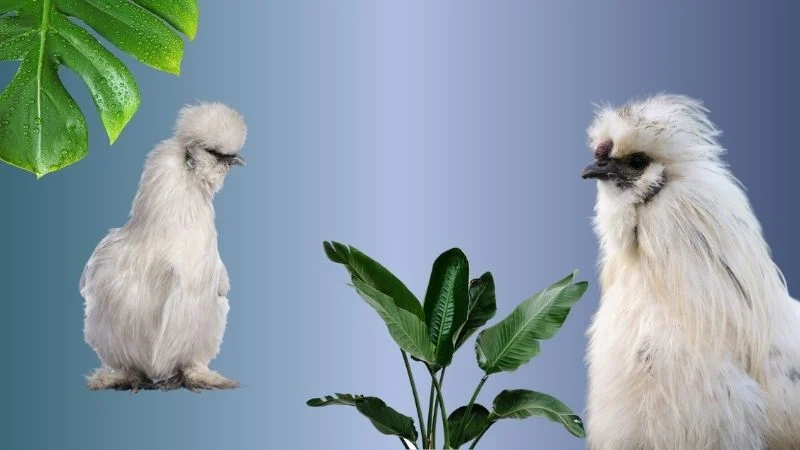
🌟 Why it’s worth keeping:
Silkies are in a league of their own. Their fluffy, rabbit-like plumage feels more like velvet than feathers. Most people keep Silkies not for eggs, but for companionship — they’re truly feathered pets.
😊 Personality:
Gentle, affectionate, and kid-friendly. Some even enjoy being held and cuddled. Roosters are rarely aggressive.
🍀 Care Level:
Fairly easy to raise as long as their coop stays clean and dry. Their soft feathers trap moisture, so they’re prone to cold and fungal infections if kept in damp areas. They don’t fly, so they’re easy to contain.
🥚 Egg Production:
Not heavy layers — about 100–120 small eggs per year. But they’re excellent brooders, often hatching not only their own eggs but also those of other breeds.
⚠️ Watch Out For:
Their fluffy feathers get dirty easily and aren’t waterproof. Keep them out of the rain and check regularly for mites or lice. Their eyesight can also be blocked by puffy head feathers — trim lightly so they can see.
🐔 2. Cochin Bantam – Round, Low, and Lovably Chill
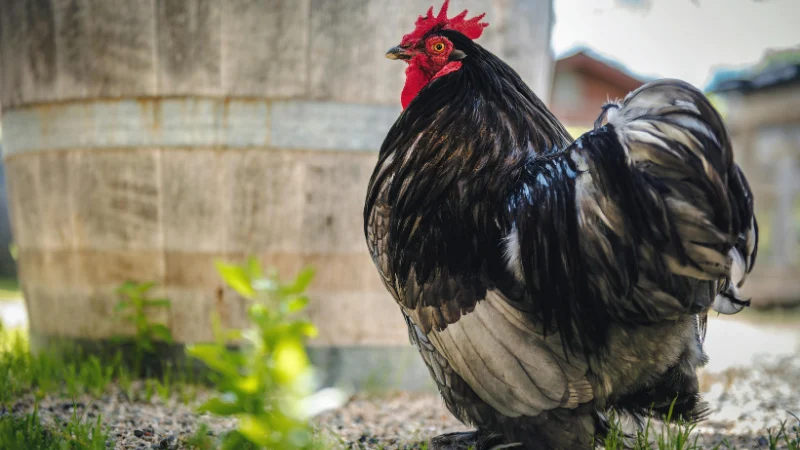
🌟 Why it’s worth keeping:
With a round body and feathered legs, Cochins look like walking fluffballs — perfect for small backyards. They’re low-maintenance and hardy.
😊 Personality:
Exceptionally docile. One of the most peaceful chicken breeds out there. They get along well with others and rarely cause trouble.
🍀 Care Level:
Very easy to raise. They tolerate cold weather well thanks to their thick feathering. Just make sure their legs stay dry to prevent foot problems. Like Silkies, they can’t fly.
🥚 Egg Production:
Moderate layers — around 150 eggs per year. Good broody hens and devoted mothers. Chicks are strong and feather out quickly.
⚠️ Watch Out For:
Because they’re so mellow, they might get picked on by more assertive breeds. Also, if their fluffy rear feathers get too thick, it can lead to messy eggs — a light trim around the vent area can help.
If you want to dive deeper into caring for Cochin Bantams, their unique traits, and tips for keeping a happy, healthy flock, check out our detailed guide on Bantam Chickens Cochin.
🐔 3. Serama – The World’s Smallest Chicken with Royal Posture
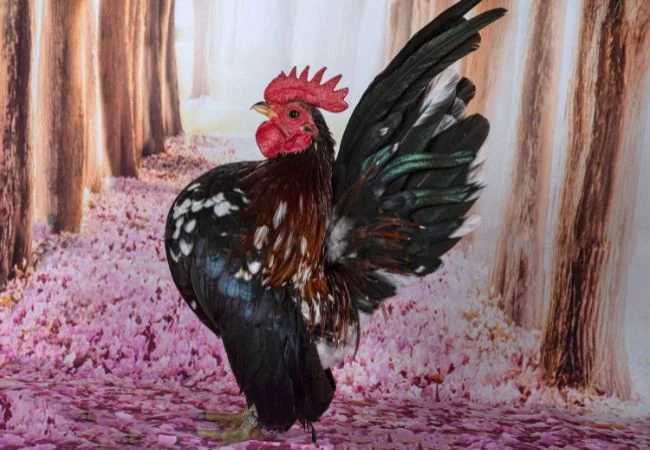
🌟 Why it’s worth keeping:
Seramas are officially the smallest chicken breed in the world, weighing less than 500 grams. But don’t let the size fool you — they stand tall and proud with their chest puffed out and head held high. You can even keep them indoors as ornamental pets.
😊 Personality:
Curious and people-friendly. Some enjoy interacting with humans and can even pick up habits if trained regularly. Roosters are… a bit full of themselves.
🍀 Care Level:
More sensitive to cold — they need a warm coop in winter. Because of their tiny size, they can’t handle poor-quality feed and may develop digestive issues. Clean housing is a must.
🥚 Egg Production:
Low layers — about 80–100 small eggs per year. However, hens are excellent mothers, especially in controlled environments. Both roosters and hens breed true, producing stable offspring.
⚠️ Watch Out For:
Not ideal for beginners in cold or humid climates. Due to their tiny size, extra caution is needed around small kids — accidental injury is a real risk.

🐔 4. Sebright – Mini Aristocrat with Metallic Plumage

Why it’s worth keeping:
Sebrights are like walking art. Their laced feathers look hand-drawn with crisp black edges — one of the most stunning Bantam breeds for ornamental keeping or poultry shows.
😊 Personality:
Lively and inquisitive, but a bit independent. They’re not exactly lap chickens, but they’re not aggressive either. Roosters can be wary of strangers.
🍀 Care Level:
A bit more demanding than average — susceptible to illness in unclean coops. They don’t fly high but love to perch. Sensitive to cold temperatures.
🥚 Egg Production:
Low layers — around 60–80 eggs per year. Sebright hens are not reliable brooders, so you’ll need an incubator or a surrogate hen if you plan to breed.
⚠️ Watch Out For:
Mostly kept for beauty, not for eggs or reproduction. Needs regular health checks. Not a beginner-friendly breed.
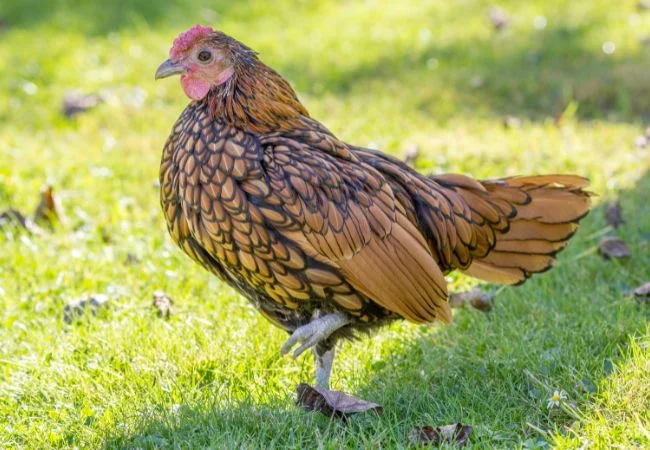
🐔 5. Japanese Bantam – Phoenix Tail & Tiny Legs
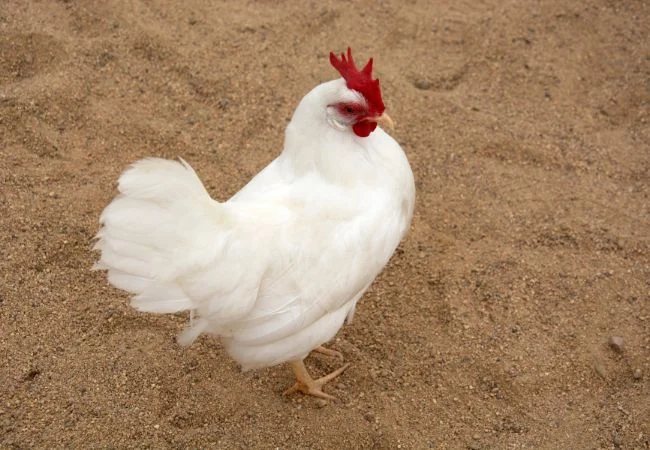
🌟 Why it’s worth keeping:
These birds have a one-of-a-kind look: a near 90° upright tail, extremely short legs, and a slow, graceful walk that feels straight off a runway. A true showstopper for ornamental flocks.
😊 Personality:
Mellow and easygoing, gets along well with other breeds. However, less likely to seek out human interaction compared to Silkie or Serama.
🍀 Care Level:
A bit tricky. Needs a very dry and clean coop — those tiny legs get dirty fast. They don’t fly, so easy to contain, but prone to illness without careful management.
🥚 Egg Production:
Very low — only 50–70 quail-sized eggs per year. Hens may go broody but don’t always succeed unless conditions are ideal.
⚠️ Watch Out For:
Not suitable for wet outdoor environments. Struggles in long, cold, damp winters. Best for experienced ornamental chicken keepers.
Aside from these five, the Bantam world is full of fascinating and colorful breeds — each with their own charm and character. Other standout names include Dutch Bantam, Belgian d’Uccle, Old English Game Bantam, Pekin Bantam, Booted Bantam, and Bantam Wyandotte. Whether you’re after looks, personality, or just something different, there’s a Bantam for you.
III. Important Considerations When Raising Bantam Chickens
Here are some general things to keep in mind when raising Bantams:
| Issue | What to Watch Out For |
| 🪶 Flight Ability | Bantams can fly—use tall fencing or netting over the run to prevent escapes. |
| 🐓 Easily Bullied by Large Breeds | Don’t house them with larger chickens, especially aggressive ones like Rhode Island Reds. |
| 🥚 Small Eggs, Low Productivity | Best suited for small families or hobby keepers—not ideal for high egg production. |
| 🌧️ Fine Feathers Absorb Water | Keep coops dry and well-ventilated; avoid letting birds get wet, especially Silkies. |
| ❄️ Less Cold-Hardy | Provide heating or proper insulation in cold weather—especially for fluffy breeds. |
| 🧬 Inconsistent Breeding Quality | Avoid home breeding unless you’re knowledgeable—buy chicks from reputable breeders. |
| 🐣 Chicks Prone to Cold/Heat Stress | Brood chicks carefully with stable heat during the first 2–3 weeks. |
| 🕊️ Friendly but Skittish | Handle gently; regular interaction helps them get used to people. |
| 🪴 Small Size = Easy Target | Secure the coop to keep out predators like cats, rats, weasels, and snakes. |
Keep in mind, raising Bantam chickens is not the same as raising chickens for eggs or meat. It’s more of a hobby—a passion for those who truly enjoy and have time to care for them. They’re more like “feathered pets” than breakfast egg machines.
👉 If your main goal is to collect eggs daily, consider looking into Complete Guide to the Top Egg Laying Chicken Breeds
Most Bantam breeds can still lay and brood fairly well, but offspring quality is often inconsistent—especially in appearance. This is mainly due to inbreeding, small-scale backyard breeding, lack of genetic selection, and limited breeding knowledge.
👉 So if you’re hoping for healthy, beautiful, and standard-conforming Bantams, keep your expectations grounded in passion—not profit or large-scale breeding goals.
IV. Recommended Products for Bantam Chicken Owners
Back to my story. That year, I started raising two Silkies – absolutely adorable, and taking care of them was a real joy. They needed their own special care routine, which meant buying a whole bunch of accessories: coop, heat lamp, feeders, food, nesting boxes… It was a bit costly, but definitely worth it for the fun.
If you’re thinking of starting or upgrading your setup, here are some items I highly recommend investing in – they’re convenient and safe for these little “mini ladies.”
1. 🏡 Compact Coop with Roof
• Why it matters: Bantams are very sensitive to cold, moisture, and predators like cats or rats. A compact, enclosed, and well-ventilated coop helps keep them safe and healthy.
• Suggestion: Wooden Chicken Coop
2. 🥣 Small-Sized, Tip-Resistant Feeders & Waterers
• Why it matters: Bantams need low-profile feeders that prevent spillage and are easy to access. If you use regular-sized ones, they might not be able to eat properly or end up soaking their feathers.
• Suggestion: Automatic Chicken Waterer 3L/0.8Gal
3. 🌡️ Mini Heat Lamp or Heating Pad
• Why it matters: Breeds like Silkies and Seramas are especially vulnerable to cold, especially as chicks. A gentle, safe heat source is essential in colder months.
• Suggestion: Brinsea Ecoglow Safety
4. 🥚 Small, Easy-to-Clean Nesting Boxes
• Why it matters: Bantams prefer small, enclosed, low-height nesting spots. Oversized boxes may make them feel exposed or uneasy.
• Suggestions:
Waterproof Chicken Nesting Box
5. 🧽 Mini Cleaning Kit + Dust Bath Sand
• Why it matters: Bantam coops are small and require frequent cleaning with compact tools. Bantams also love “dust bathing” to keep their feathers clean and mite-free.
• Suggestion: Chicken Poop Scooper Shovel Rake Scrub Brush
V. Conclusion: Bantam Chickens – Tiny Birds, a Whole World of Joy
Raising Bantam chickens isn’t for those chasing high egg production or meat yields. It’s a gentle, refined hobby—like tending a miniature garden or caring for a few feathered pets.
Each Bantam breed tells its own story: the Silkie, soft and calm like a cotton puff; the Serama, the smallest chicken in the world but full of confidence; the Cochin, adorably short and round; or the Dutch, elegant like little aristocrats. You don’t need a large yard or a big farm—just a cozy corner, a bit of time, and a heart that loves life’s little wonders is enough to begin your Bantam journey.
That said, don’t mistake small for fragile. Bantams have specific needs and deserve proper care—from their coop and diet to their overall environment. If you’re ready, raising Bantams won’t just bring cheerful clucks to your backyard—it’ll bring daily joy as you watch them strut and play in the morning sun.
👉 Got a Bantam breed you’re raising or some experience to share? Drop a comment below! Let’s build a happy, thriving community of mini chicken keepers together.

